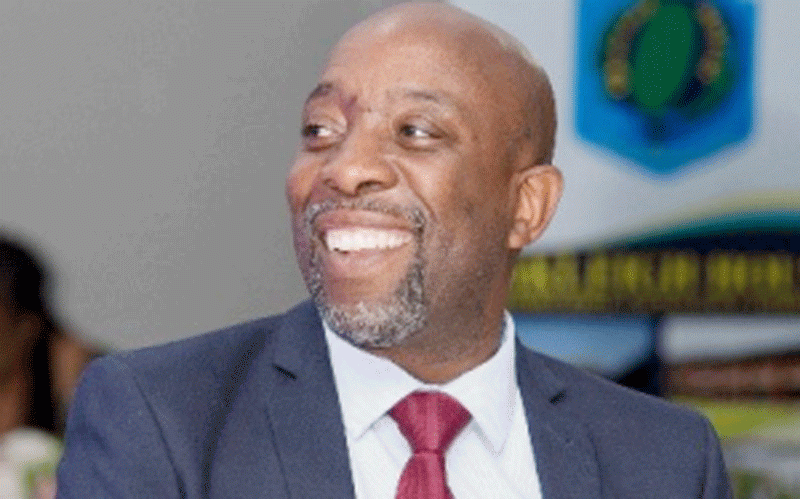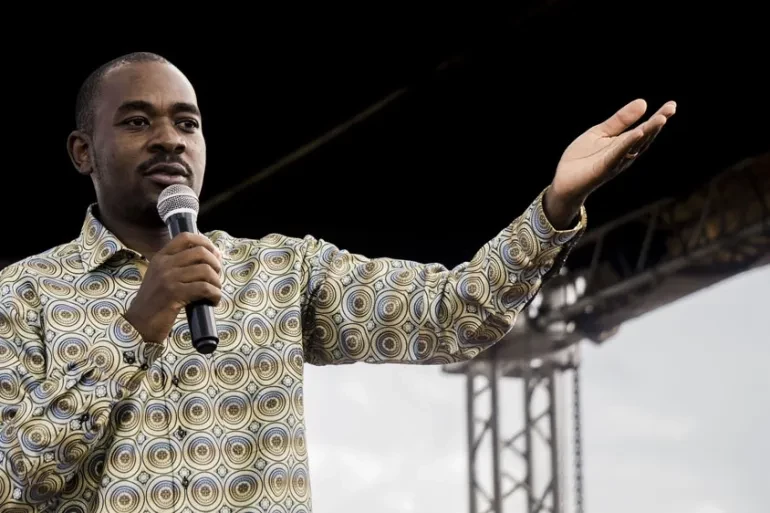
BY MOSES MUGUGUNYEKI
FOR the better part of her life, 65-year-old Elina Ngwenya has had to risk her life waking up early in the morning to fetch water in a community that is frequented by dangerous wild animals like jackals and hyenas.
If she didn’t wake up early, she would find the village source of water, an unprotected well or the borehole dry.
The borehole had sporadic breakdowns, which would at some point take lengthy periods for it to be repaired compelling Ngwenya and other villagers in Munyeche, Samende in Binga ward 6 to turn to an unprotected source, a shallow well.
Despite living in communities adjacent to the mighty Zambezi River, Ngwenya and fellow villagers have had to endure prolonged periods without water.
At times they had to travel several kilometres to source the commodity in communities where it was available, but to get there she had to risk her life and that of her three children and grandchildren.
“We would wake up early in the morning to fetch water risking lives because there are some wild animals roaming the village at night,” Ngwenya told The Standard last week.
“It was so agonising to wake up the young girls knowing that outside there were dangerous animals.
- Chamisa under fire over US$120K donation
- Mavhunga puts DeMbare into Chibuku quarterfinals
- Pension funds bet on Cabora Bassa oilfields
- Councils defy govt fire tender directive
Keep Reading
“But there was nothing that we could do because we wanted water. Water is life.”
According to a recent United Nations Women study based on data from 61 countries, in 80% of water-deprived households, women and girls carry the burden of water collection.
As water scarcity and droughts become more widespread, women and girls find themselves walking greater distances to fetch water.
“When we came back from fetching water the girls would be weary and it affected their studies very much,” Ngwenya said.
“In most cases, they would not go to school and ended up dropping out of school.”
She said efforts to bring water in the area have over the years hit a brick wall due to a plethora of challenges, chief being the area’s fluctuating water table that caused sources of water to dry up during the dry season.
“Most wells would dry up in the dry season,” Ngwenya said.
“We also had boreholes drilled in the area, but you would find out that some dry up while others just stopped working.”
However, for Ngwenya and many others in Samende Binga ward 6 water woes are now a thing of the past after the Zimbabwe Red Cross Society (ZRCS) in partnership with the United Nations Children’s Fund (Unicef) installed a piped water system in the area.
Today, hundreds of villagers in Munyeche, Siyamajiti, Siyakula and Siamvikeni as well as schools and a clinic are benefitting from the piped water scheme, which is part of broader water, sanitation and hygiene (WASH) programme that ZRCS is undertaking in seven districts across the country.
The US$650 000 WASH project is being implemented in Harare (Hopley), Marondera Urban, Binga, Muzarabani, Mangwe, Siakobvu and Kwekwe Rural.
“We no longer wake up early in the morning to fetch water. We just go to the tap and fetch the water just like people in town,” said Ngwenya, who was among a group of women watering vegetables in a garden.
“We used to get water for the garden from a distance, but because we have this water scheme we just get water within the garden, which makes it easier for us.
“Look at this thriving vegetable crop, it’s because there is water.”
Zanele Ngwenya, a Grade 4 pupil at Samende Primary School, said the water project would help her continue with her studies as she no longer spent time fetching water.
“Most of my sisters and aunts did not further their education as they had to stay home fetching water,” said Zanele, who wants to be a teacher after finishing her studies.
“We are opening schools soon and I think my parents have the money because they sold a lot of vegetables in the past few days.”
Moffat Mukuli, a secretary for the water point, said the water scheme will go a long way in addressing the water challenges that communities have been facing over the years.
“We used to have problems of water, especially during the dry season,” he said.
“The coming of this water project would enable us villagers to start some income generating projects apart from the garden project that we have.”
Mukuli encouraged fellow villagers to ensure sustainable use of the infrastructure set up by the ZRCS.
Shepherd Fulunga, who is the caretaker of the water project, said the communities chipped in with labour, something which expedited the laying of the pipes.
“We mobilised community members to provide labour, especially the digging of trenches and setting up of the tank,” Fulunga said.
“The water project is ours, so we need to protect it and make sure it is used in a sustainable manner.”
He said the piped scheme has seen the setting up of water points in a number of villages reaching out to close to 5 000 people.
Part of the water project saw ZRCS installing a non-returnable valve at Samende Secondary School tank, which avoids backflow of water that affected water accessibility at the clinic and Siabanga community.
Samende Secondary School head Canaan Muleya said the piped water scheme had transformed the school.
“Before the piped water scheme, there was no school to talk about here, save for a structure which was a cottage for myself and another teacher,” Muleya said.
“When we got water, we managed to construct these three classroom blocks and two teachers’ houses in three months’ time.
“All this was because we have the water and thanks to Red Cross and other partners that have assisted in bringing water to this school.”
Apart from the Samende water pipeline project, ZRCS carried a similar scheme in Siamuloba where the organisation helped the community repair pipes that draw water from the Zambezi River.
Across the district in Siansundu ward a health facility — Siansundu clinic — has for the past three decades operated with poor sanitation facilities that fell short of the World Health Organisation’s basic WASH services guidelines.
According to a villager Micho Mukhuli, the health centre’s ablution was last used in 1992.
“The toilets have not been working since 1992 and people were using the Blair toilets,” Mukhuli said.
“Most of the sanitation facilities in the clinic were in a decrepit state.”
It is against such a backdrop that ZRCS changed the story of the clinic when it repaired the sanitation infrastructure under its WASH programme.
“Red Cross Society has changed the story of Siansundu clinic and the main beneficiaries of the ablution facilities are the admitted patients and women, who are in labour or soon after delivery that need clean sanitation facilities and water,” said a nurse at the health facility.
“Before the intervention women in labour, or after delivery had to walk some distance to the Blair toilets, but now they can move a few steps to the bathroom and ablution facilities which are even more user-friendly.”
The clinic staff welcomed the intervention, which brought relief to most vulnerable women, particularly those in labour and in post natal stages.
“Women can now bath within the labour ward and can easily access toilets just close to the labour ward,” the nurse said.
Part of the project at Siansundu clinic, which serves four wards, included the repairing of the dilapidated and damaged roof of the toilet and laying of new pipes that connects it to the soak away.
The repair works, which were done in partnership with government departments such as Public Works, District Development Fund and Zimbabwe National Water Authority, saw a new soak away being constructed while the existing septic tank was emptied and then plastered.
“A water storage tank was also repaired as it could only save water to its half capacity, but after the repairs the tank can now store water at its maximum level, thus allowing the clinic to have more days with water even during the pipeline breakdowns,” said the nurse.
ZRCS secretary-general Elias Hwenga said Binga was among seven districts in the country where the organisation was carrying a six-month WASH programme.
“Zimbabwe Red Cross Society, with support from Unicef, was implementing an emergency water and sanitation and Covid-19 response project in five wards (7, 8, 9, 10 and 13) of Binga district,” Hwenga said.
“Part of the project included the repairing of two pipelines (Siamuloba and Samende pipelines) and the repairing of Siansundu clinic sanitation facility.
“The other component of the project included the Covid-19 mobile awareness campaigns, Covid-19 trainings, water point committee trainings, volunteer-driven door-to-door awareness campaigns and non-food items distributions.
“All the activities were successfully completed as planned despite the challenges which the project faced.”










